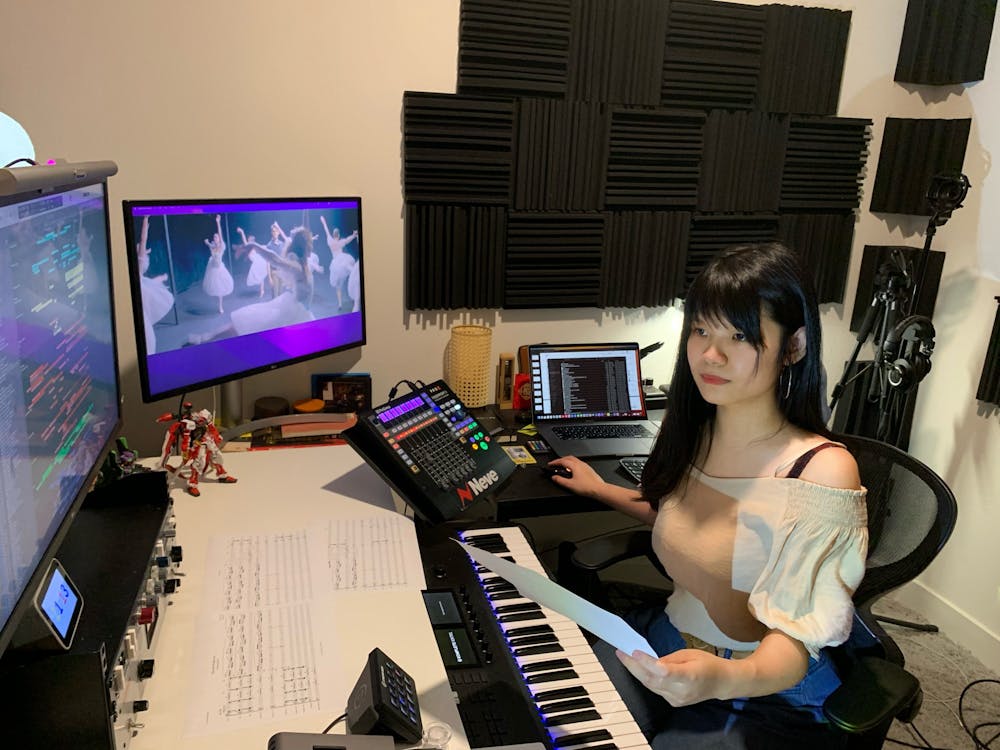“Dancing Man,” a new short film from IU grad student Robert Mack, is set to premier at 2:30 p.m. Feb. 26 at IU Cinema. The event is free but ticketed. Tickets are available on the IU Cinema website.
“Dancing Man” follows a young male ballet dancer — David — who, unmotivated by his current career, finds himself lost in a fantasy world heavily inspired by classic Hollywood movie musicals. David, however, becomes torn between the girl he loves and the chance for his dream career when a new choreographer presents him with a unique opportunity.
The film is co-directed by Mack and IU alumna Clarisse Gamblin, with an original score by IU alumna Yi-Chen Chiang. The Indiana Daily Student spoke with Chiang about her work on “Dancing Man” on Feb. 14.
Related: [Annual Trashion Refashion Runway Show accepting design submissions until Feb. 19]
IDS: How did you become a part of the “Dancing Man” team?
Chiang: Initially, he (Mack) went to a friend — a fellow composer — but he was graduating and busy, so he asked for me instead.
IDS: How is composing for film different than composing for orchestras?
Chiang: It’s pretty different. In the past, I’ve written classical music and for concerts, I am the main director. But if I write the music for a film, I am not the main director — I help the film tell the story. I use the music to explain what happens in the plot and help the audience understand more.
IDS: Why did you want to work on this project?
Chiang: I write classical and orchestral music a lot. The music “Dancing Man” wanted was huge and rich like from an orchestra — which is what I’m good at. So, I think we collaborated well on that.
IDS: What was the creative process like?
Chiang: “Dancing Man” is different from other films because it is a film with lots of dancing elements. The process of film scoring is normally shooting the film first and then we write the music. But for “Dancing Man,” I wrote the music first and then when they shot the film, they were recording my music while dancing. It was different from my past work and Mack also wanted some instrumental sounds to be recorded — not just from a computer — but from real instruments. In this case, when I composed, I had to consider the performer.
IDS: Is there a challenge in adjusting composing for actual musicians versus a computer?
Chiang: Sometimes, you forget the rules of the instrument with the computer. Sometimes, you write a note an instrument can’t play, but it’s fine on the computer. If you use that to make a score for the player, it just won’t work. So for the recording session, I had to take more care of the instrument rules and the skills of the player to make sure it was playable. It’s more fun but also more challenging because we just recorded some parts of the score. So, mixing the tracks of real and virtual instruments was a challenge but very fun.
IDS: What was your inspiration when composing for this movie?
Chiang: In my daily life, if I hear music — like from a taxi or a restaurant — I think “this chord, this harmony is so cool,” and I will take a note in my phone about the number of chords or the melody. When I start to compose, I will look at my notes to see what cool sounds or harmonies I can use. The inspiration comes from any sound, intentional or not. I think the music people play or compose is always from musical memories.
IDS: The film is an homage to classic musical movies. Did you look to those for inspiration?
Chiang: I did listen to music from some classical dance movies, and I found that the woodwinds and brass they used were very active. So in “Dancing Man,” I kind of imitated that kind of music. I also added some Disney music elements in the scoring and some jazz chords to try to create a different style.
Related: [IU to host fourth annual Montage Film Festival in April]
IDS: This is a dance-heavy film. What was it like composing dance scenes?
Chiang: I focused more on the beat and the rhythm. In percussion parts sometimes it’s very strong so they (the dancers) could find the beat and dance easily. Typical ballet music has very rich and big orchestra arrangements, so the music I used was like a full orchestra arrangement — which was a lot of work.
IDS: What are you excited for people to take away from this film?
Chiang: In the music parts, I hope people can find the different melodies I wrote for different characters. So, if this melody comes up, they’ll know a certain person or a certain dancer will appear. I hope my music will help the audience remember the characters well because dancing is an important part. I also hope they can feel the music and dancing combined.




